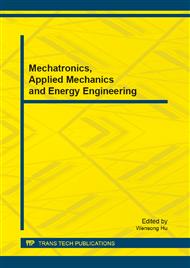p.59
p.65
p.69
p.75
p.80
p.86
p.92
p.96
p.101
Research on Mathematical Model of Liquid-Continuous Impinging Streams
Abstract:
Aiming at sufficiently recognizing and optimally designing the flow structure of impinging stream, and accommodating theoretical basis with the improvement and innovation of processing equipment, this dissertation researched the mathematical model of Liquid-continuous impinging streams. It, primarily, established the mathematical model of Liquid-continuous impinging streams through analyzing the physical characteristics of flow field of Liquid-continuous impinging streams.Then it obtained the locus function, velocity function and pressure function of Liquid-continuous impinging streams though solving equation of the model.Finally it made a numerical simulation about Liquid-continuous impinging streams by using CFD software.The result of numerical simulation and the analysis about flow characteristic suggests that the mathematical model established by this paper is appropriate for describing the flow field of Liquid-continuous impinging streams.
Info:
Periodical:
Pages:
80-85
Citation:
Online since:
September 2013
Price:
Сopyright:
© 2013 Trans Tech Publications Ltd. All Rights Reserved
Share:
Citation:


